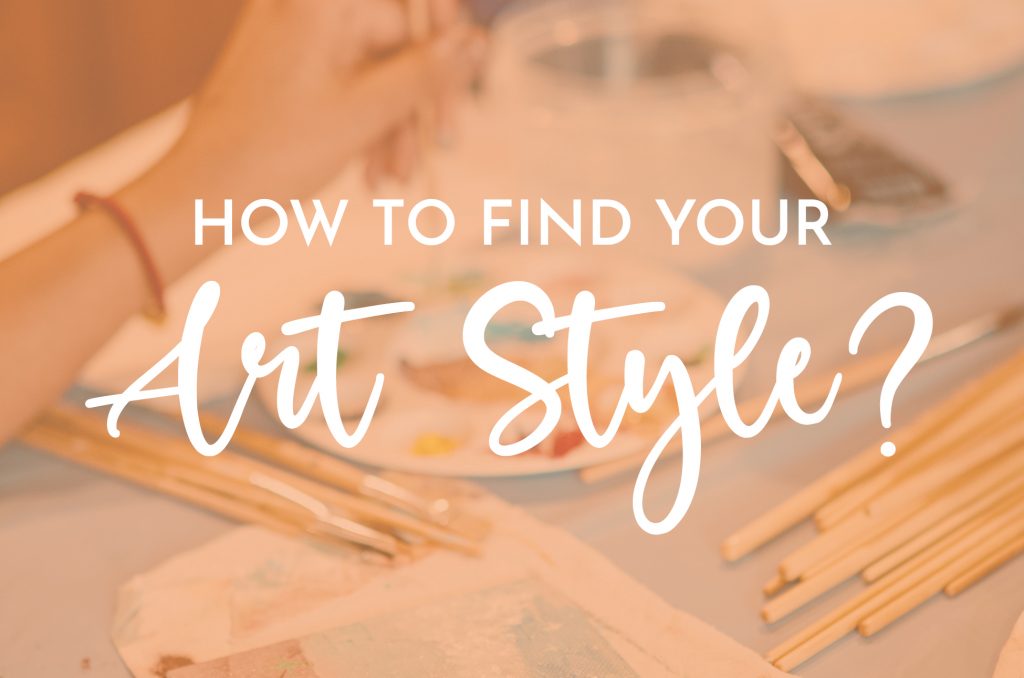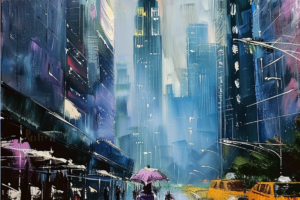If you think about any famous artist, there’s something about their artwork that makes them stand out. That’s their style. It’s what makes their art unique, special, and memorable.
Every artist needs to develop their own style.
If you’re just starting out, that might sound overwhelming and scary. You may not even know where to start or how to find your own art style. But that’s okay!
It’s not unusual to wonder how to develop an art style. It’s a process that happens over time instead of overnight, and you may not even notice it happening.
But there are ways that you can intentionally work on finding your art style. If you’re eager to create a distinctive style sooner rather than later, then read on.
Some people think you shouldn’t try to influence or meddle with your style and let it happen organically.
But it’s not about creating an artificial or forced style. It’s about knowing how to explore your artwork and other artistic influences. That will give you a headstart on how to develop an art style.
It’s more than improving your technical skills, too. You need to put time and thought into the creative decisions and thought process behind your art.
Your art style will continue to grow and change over time. It’s not fixed or permanent, just as everything in life is never static. We’re always learning and adapting.
But having a distinctive art style will make you stand out. It’s what makes you unique as an artist. Your style creates a connection between each individual artwork.
Many artists go through certain stages when developing an art style. I experienced this myself, too – you can’t jump from beginner to expert overnight. But there are specific things you can do to discover and nurture your art style.
So, here’s my guide on developing an art style authentically, but in less time. You don’t have to rush through these steps, though. Take as long as you like, as it’s a fun and inspiring journey!
What is an Art Style?
An art style is what makes you different from every other artist out there.
Many aspects combine to create an art style, from the theme to the medium, technique, and subject.
One way to identify an artist’s style is to look for overarching elements in their work. Even if an artist uses different media, you’ll likely find some common themes.
It could be a distinct technique or a central mood or tone. And what defines an art style will differ from artist to artist.
You might be wondering, what’s so important about having your own art style? Firstly, it helps people recognize your work so that you can reach your target audience.
There are so many artists out there, so you need something to set you apart from the crowd.
When you have a clear artistic style, people will seek out your signature style. So, you can also become a more successful artist (and get paid more for your work!)
Not everyone agrees on how to find an art style. Some believe it comes naturally, while others think you can influence your style.
You can take an active part in finding your art style. It goes beyond having technical skills. It’s about where you take inspiration, how you view the world, and the creative decisions you make.
Let’s take a closer look at how to find your own art style!
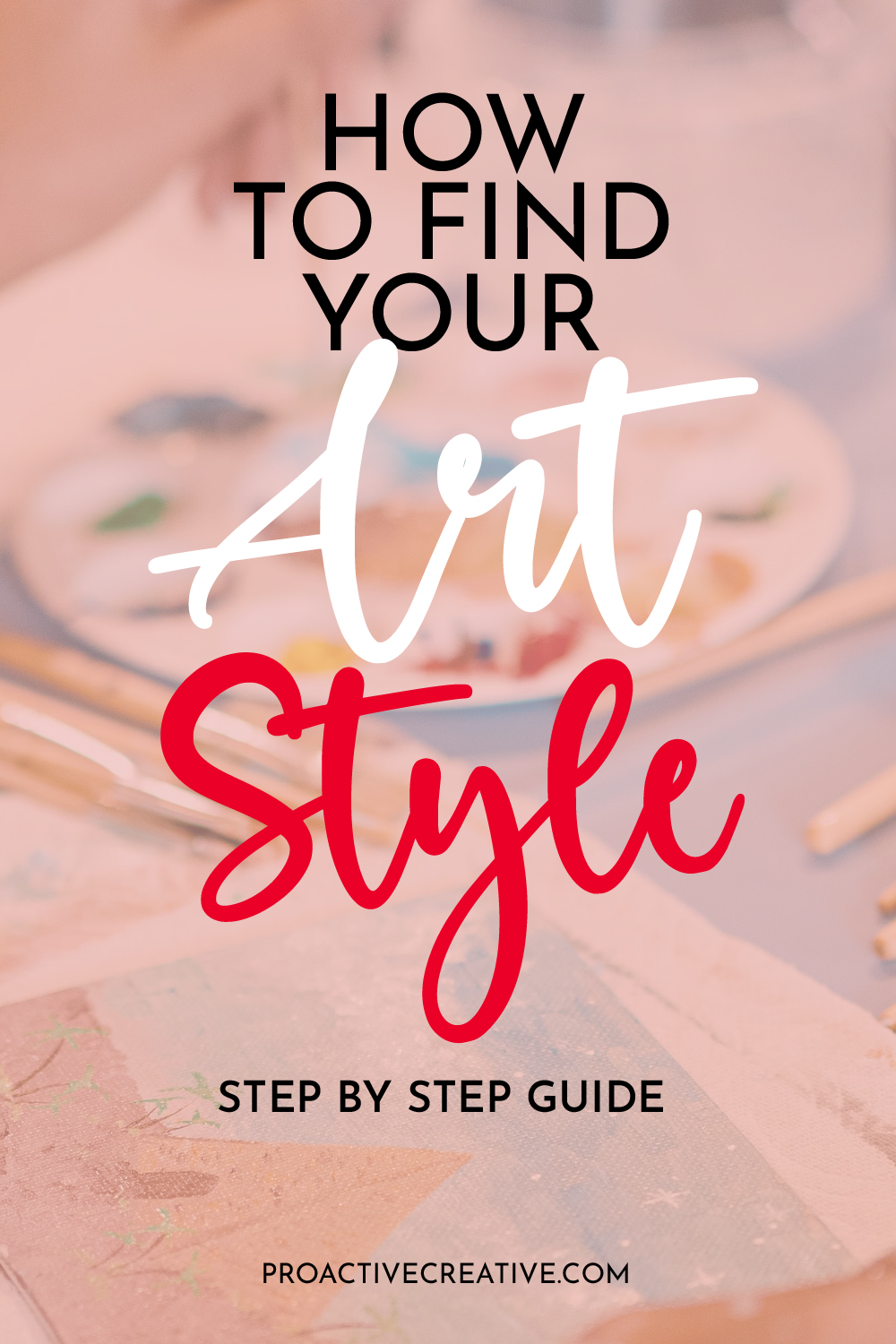
How to Find Your Unique Art Style?
Here’s my simple guide to finding your art style. Just follow these steps, and you’ll soon know how to paint or draw in your way. You’ll feel confident creating art and know what makes your style special!
1. Research art movements for inspiration
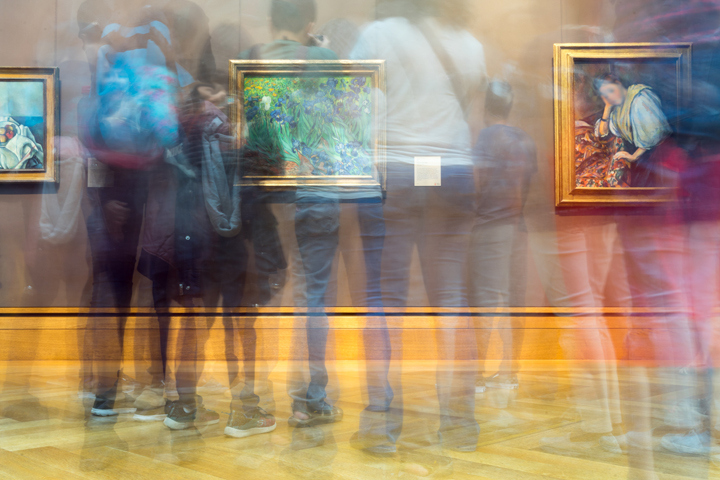
When you start working on how to develop your own art style, research is an excellent place to start. That’s especially true if you haven’t studied many artists yet.
Take some time to get familiar with different art movements and notice what appeals to you. It’s also worth looking at what you don’t like and trying to identify why.
Specific movements or artists may draw you in and speak to you. You’ll know when it happens!
You may feel a connection with bright, bold pop art. Or Surrealism could be more your style.
You don’t have to limit yourself to a specific art movement. I’d recommend reading books, browsing online, and speaking to other artists.
As you compare different styles, make a few notes about what resonates with you. It could relate to the media, techniques, or the feel of the artwork.
You might find a passion for a specific art movement. For me, I discovered minimalism in art and didn’t look back! It fired up a passion in me, and I delved in to learn more and create my own minimalist designs.
Then, you can focus on specific artists and art movements to get even more inspiration. That takes us to the next step.
2. Finding your art style by copying the artists you like
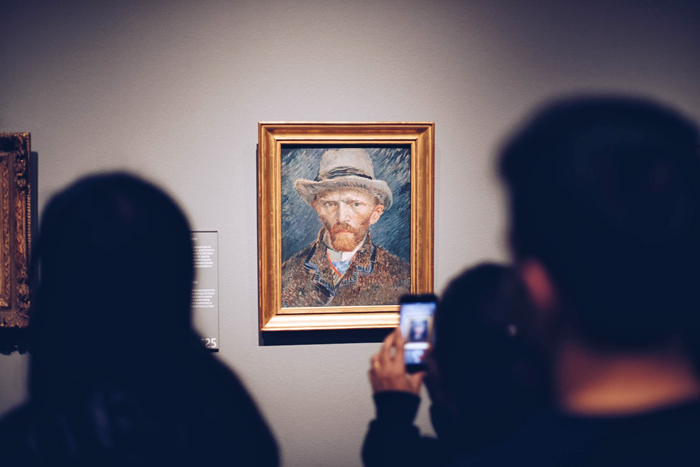
Every artist starts by copying others. You’ll see this even in the youngest children, as they copy what they see, from pictures to objects around them.
It’s still a reliable way to grow your skills and gradually develop your style.
The art you consume will affect your style. That’s true of everything from paintings to films, music, and the world around you.
We’re always finding sparks of inspiration all around us, even when we’re not aware of it.
So, it’s natural to incorporate aspects of our favorite artists’ work into our art. But, there is a distinction between taking inspiration and copying outright.
You can take elements of different paintings without making a carbon copy. If you admire an artist who paints natural landscapes, you can work on your nature paintings, too.
But don’t attempt the exact same scene. Instead, use a different setting and try similar techniques without copying the original.
For example, you might admire Dali’s quirky, surreal paintings. You can try your hand at a similar style – just don’t choose melting clocks! You need to take some initiative, too.
I also recommend getting your inspiration from as many sources as possible. You can bring in elements from various artists’ work. By mixing them up in the cooking pot of your mind, you’ll come up with something new and unique.
A word of warning: Don’t spend too much time comparing yourself to other artists. It’s the quickest way to become frustrated with your work and give up.
Remember, it’s a learning process, and mistakes are an essential part of growing. No one is born an expert illustrator, painter, or sculptor. It comes with (lots of) trial and error.
3. Hone your observation skills
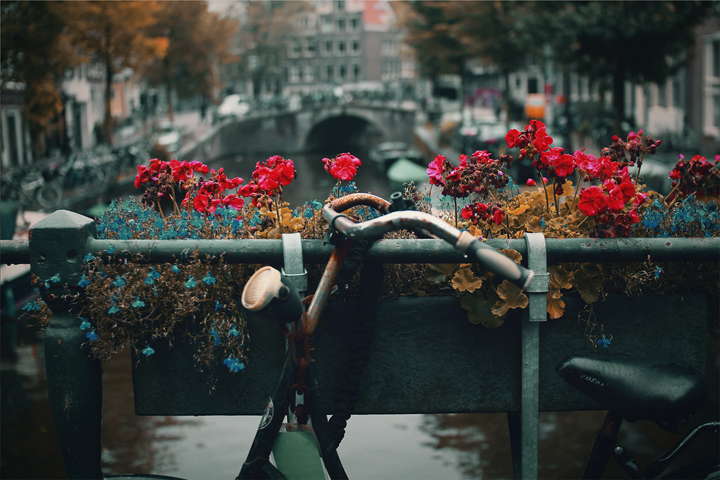
Observation is an essential skill every artist needs to hone. And it’s simple enough to start. All you need to do is start noticing the world around you.
Pay close attention to all the details, such as facial expressions or how a tree looks when the wind blows.
You need to slow down and take in more of what’s around you, rather than rushing through your day. Take note of how shadows fall or the light affects a scene.
Noticing these little details will take your artwork to the next level. Whether or not you want to create realistic art, you need to know how to follow the rules. Then, you can break them if you like!
Start asking more questions, too. Nurture your curiosity! Ask why, what, and how questions to encourage yourself to become more observant.
You can work on your observation skills in your daily life. But you further it by painting still lives and trying to notice (and replicate) every detail.
4. Take inspiration from nature

When you’re working on your technical skills, a good place to start is by taking inspiration from nature. That could be in the form of landscapes, drawing plants, animals, or people.
Once you’ve become adept at recreating a scene, you can experiment with techniques. This step is when you start to play with your style!
You could try to paint the same scene in several different styles. Then, see what you like best!
But you should avoid overthinking things. You can also follow your intuition and draw or paint in the way that comes naturally to you.
5. Challenge yourself

You’ll grow by tackling some challenging tasks and projects. If you don’t push yourself out of your comfort zone, you’ll always play safe. Then, you won’t discover what makes your art style unique.
Try out different materials, techniques, and styles and see how they feel for you. Experiment with something that feels uncomfortable, and embrace the results. They don’t need to be perfect!
If you’ve always created realistic illustrations, attempt an abstract piece. Or the other way around!
Learning to embrace your failures is vital to becoming a confident artist. Not everything will turn out how you want it to look, but you can learn something from every mistake you make.
The more you try, the sooner you’ll discover what your art style is. So, be brave, and tackle a challenging project that will help you reach your potential.
6. Think about the story or message behind your art
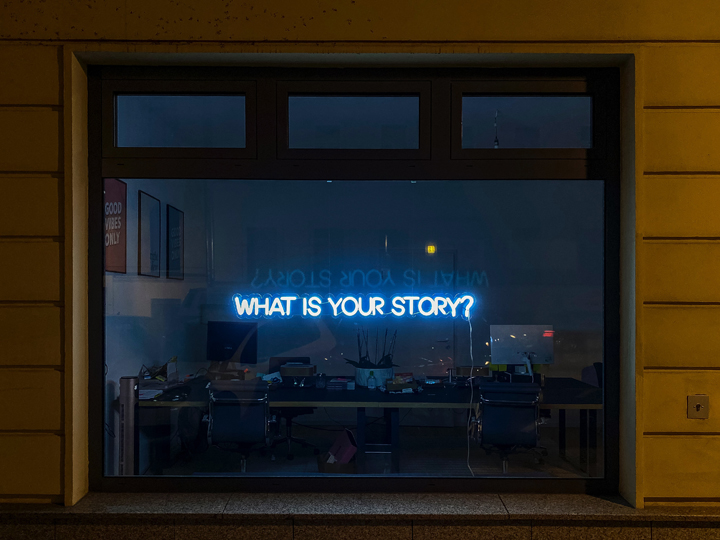
It’s all very well to focus on your technical skills when you’re just starting.
You’ll need to develop a good understanding of how to draw in perspective. It’s essential to get forms and proportions right and know how to approach a composition.
But there’s more to making compelling art than drawing realistically.
What moves people and draws them to art is the mood, the message, and the story. Every effective artist has a vision for what they’re creating.
That’s why I’d encourage you to spend some time thinking about what you want to communicate through your art. This message will make your artwork both more authentic and original.
7. Don’t forget to HAVE FUN!
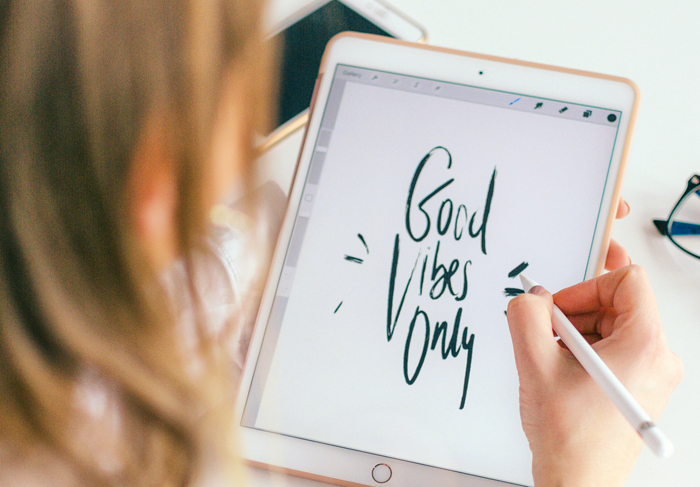
But that doesn’t mean you can’t have fun with your art. While you should push yourself out of your comfort zone from time to time, you should also enjoy your art!
Creating art should be fun, relaxing, and enjoyable. You don’t always need to have goals and expectations for what you make.
Enjoy the process and the journey. Sometimes, you’ll create your best work or have an inspired brainwave when you’re in the flow and under no pressure.
Make time to follow your interests, have fun, and enjoy your art. Don’t build up your expectations so much that you’re always disappointed with the result!
Relax and know that even if you don’t love what you’ve created, it’s all a learning experience. When you make a mistake, you could go down a path that you would never otherwise explore. It can open doors and let in inspiration from unexpected places!
But if your expectations are too high, you set yourself up for failure.
Fear of failure can hold you back from expressing yourself freely. If you become too focused on the result, you won’t enjoy the journey, and you’ll miss those crucial lessons along the way.
Some of my best pieces of art have come from making mistakes and then exploring the options. Don’t limit yourself to a prescribed path and miss out on exciting opportunities.
Instead, cultivate a growth mindset and an open-mindedness around your art. That will allow more space for inspiration, creativity, and growth as an artist!
8. Practicing is essential for developing an art style
Don’t expect to become an expert artist or nail a new technique overnight. And in the same way, your art style won’t come fully formed and ready to go.
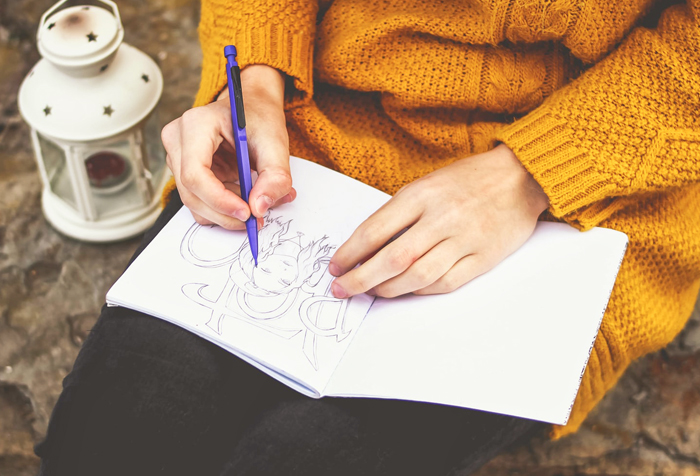
You’ll need to put in a lot of work, both for your practical skills and the thought process behind your work.
The more you practice, the better command you’ll have of the art fundamentals. You’ll become stronger technically and also more confident in the art you like to create.
Every artist needs to go through the process of discovering their artistic style. It takes time and practice to work out how to present your work in an authentic and individual way.
But don’t feel disheartened. See it as an invitation to make more art! Try to block out regular time to draw, paint, and create every day – even if it’s just for 10 minutes.
I recommend making it part of your daily routine. For example, you could sketch for 10 minutes before breakfast. Or you could spend half an hour painting when you get in from work.
The more consistent you are, the sooner you’ll see results. Blocking out this time on your calendar can help to keep you accountable until it becomes a habit.
Regular practice, consistency, and openness to learning will pave your way to success.
9. Patience is the key to success
Patience is another crucial quality to cultivate if you want to become a talented artist. As I mentioned, you’ll need to commit to practicing and working on your art often – ideally every day.
You’ll need the tenacity to keep going when you’re struggling or not making as much progress as you’d like.
It’s through a regular application that you’ll master new techniques. You’ll discover your preferred medium and learn to express yourself.
Make art a way of life, rather than something you do as your hobby or job. Even when you’re not drawing, you’re still an artist.
At the same time, you can weave your personality into your art. The more entwined art becomes in your life, the easier it will be to create a unique art style.
With time and practice, you’ll develop a strong and individual art style. But it will happen gradually. There’s no lightbulb moment where you suddenly discover what your unique style is.
You have to trust that it will happen and keep making art in the meantime.
You’ll need to be patient; you can’t develop an art style overnight. The more time you spend on your art, the quicker you’ll become aware of your art style.
Check out this amazing video of Heather day in The Studio
Final Thoughts on How to Find Your Art Style
Discovering your art style is essential for every artist, and it’s a journey we all have to travel.
These tips should help in knowing how to find an art style that’s right for you! You can take inspiration from other artists, nature, and the world around you.
Do your research, make more art, and have patience and persistence. If you can follow these simple steps, you’ll be well on your way to cultivating an art style that’s uniquely your own.
Keep looking out for the common elements and quirks in your art. They’re what make it special and stand out. Because there’s no one else quite like you, and you bring something fresh and new to the art world.
In the meantime, don’t compare yourself to others and their paths. Some artists travel this path very quickly, and for others, the journey is longer. But it’s always worthwhile!
If you have any questions for me, share them in the comments section below. I’m always happy to connect with other aspiring artists!

